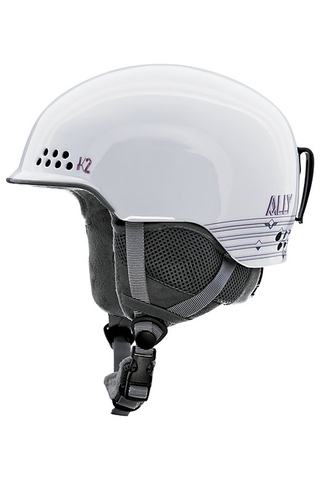Snowboard helmets
Filters ()Snowboard helmet is the absolute basis of every snowboarder's outfit. It provides optimum safety and makes it possible for you to indulge in the frenzy on the slopes without worrying about your health. Of course, even the best helmet does not exempt you from thinking and being careful and concerned about the safety of other users of the slope. However, driving without a helmet is simply unimaginable by today's standards, plus in some countries you can pay a fine for such an attitude.
Luckily, manufacturers are creating snowboard helmets with increasingly interesting aesthetics, which means that this accessory can be an interesting accent to the whole styling. What else to pay attention to when choosing a helmet? How to choose the right size? We answer the most important questions and share tips that will make buying a new helmet much easier than you think. Ride!
Snowboard helmet - characteristics
When choosing a helmet, it is worth paying attention to its characteristic features, such as:
- safety standards that snowboard helmets must meet,
- the material bonding technologies used in the helmet (ABS, in-mold or hybrid) - each of these systems has its pros and cons. ABS is cheaper, sturdier, very impact resistant, but heavier, while in-mold provides the highest safety standards, but has a higher price tag,
- helmet ventilation - it is worth paying attention to the ventilation systems used and choosing helmets in which airflow will be facilitated,
- adjustment systems - the most popular is BOA, which is an easy and intuitive dial system,
- built-in goggles - such a solution has its lovers, but also enemies. Certainly, such a snowboard helmet will suit forgetful people - it's always one less gadget to take with you. People who wear corrective glasses every day will also be happy with this solution.
- soft vs. hard ear - helmets with hard ears will be good for aggressive riding enthusiasts, but sometimes they distort ambient sounds and can cause disorientation in the field. Soft ear is more versatile and more common.
Snowboard helmet - what is it made of?
A snowboard helmet is made up of an inner and outer shell, ears, and adjusting and fastening systems. The outer shell is the hard surface that first comes into contact with the ground or other object during an unfortunate fall or crash. Its job, therefore, is to absorb energy from the impact. The inner shell is designed to cushion and dissipate the force of the shock from the impact. The ears are the part of the helmet that covers the ears and can be soft, detachable or hard. In turn, additional systems such as straps and adjustment knobs are used to fit the helmet to the head. Modern helmet models use advanced adjustment systems, such as BOA, which allows you to adjust the helmet with a convenient, intuitive dial.
A well-fitting snowboard helmet is an absolute necessity, otherwise this accessory becomes useless and will not protect you during an accident.
Snowboard helmet - what does it protect against?
The purpose of a snowboard helmet is to protect the head and cervical vertebrae from injury in the event of a fall to the ground or a collision with an obstacle or another slope user. Thanks to the absorption of energy from the impact and cushioning - the person involved in a dangerous event has the opportunity to emerge from the situation unscathed. To increase the likelihood that a helmet will effectively protect against injury, always keep in mind a few rules:
- buy only new (unused) helmets, because only then do we know its expiration date and the entire history of use. According to the certificate from the date of manufacture, the helmet retains its injury protection properties for 5 years. Unfortunately, buying on the secondary market, we can not have a guarantee that the helmet has never been damaged,
- after any serious accident, the helmet should be replaced with a new one, even if it looks good from the outside. The shock absorbing layers and skeleton of the helmet may have been damaged, which is not visible to the naked eye,
- Pay attention to safety approvals. Buy helmets only from reputable manufacturers that sell certified equipment. Do not buy a helmet at a bazaar near the slopes or from other unreliable sources.
Snowboard helmet - how to choose a size?
Buying men's and women's snowboard helmets should be guided by the size charts of a particular manufacturer, but there is one universal rule for sizing helmets.
Shelmets are manufactured in sizes from 49 to 64 cm:
- children's helmets - sizes end at 56 cm,
- women's snowboard helmets - sizes range from 54 to 58 cm,
- men's snowboard helmet - sizes range from 56 to 64 cm,
To measure your head for the helmet, use a tailor's tape measure, which should be placed 1 cm above the eyebrow arches and just above the ears. When you get the measurement in centimeters, compare it with the above. Sometimes helmet measurements may be given in inches. In that case, convert centimeters to inches.
In addition to the division into women's snowboarding helmets and men's snowboarding helmets, you may also encounter a division into sizes XS- XL, and then:
For adults:
- XS: 48-53 cm (19-21")
- S: 53-56 cm (21-22")
- M: 56-59 cm (22-23")
- L: 59-62 cm (23-24.5")
- XL: 62-64 cm (24.5-25")
For children, on the other hand, the sizes fall as follows:
- S: 48-53 cm (19-21")
- M: 53-56 cm (21-22")
